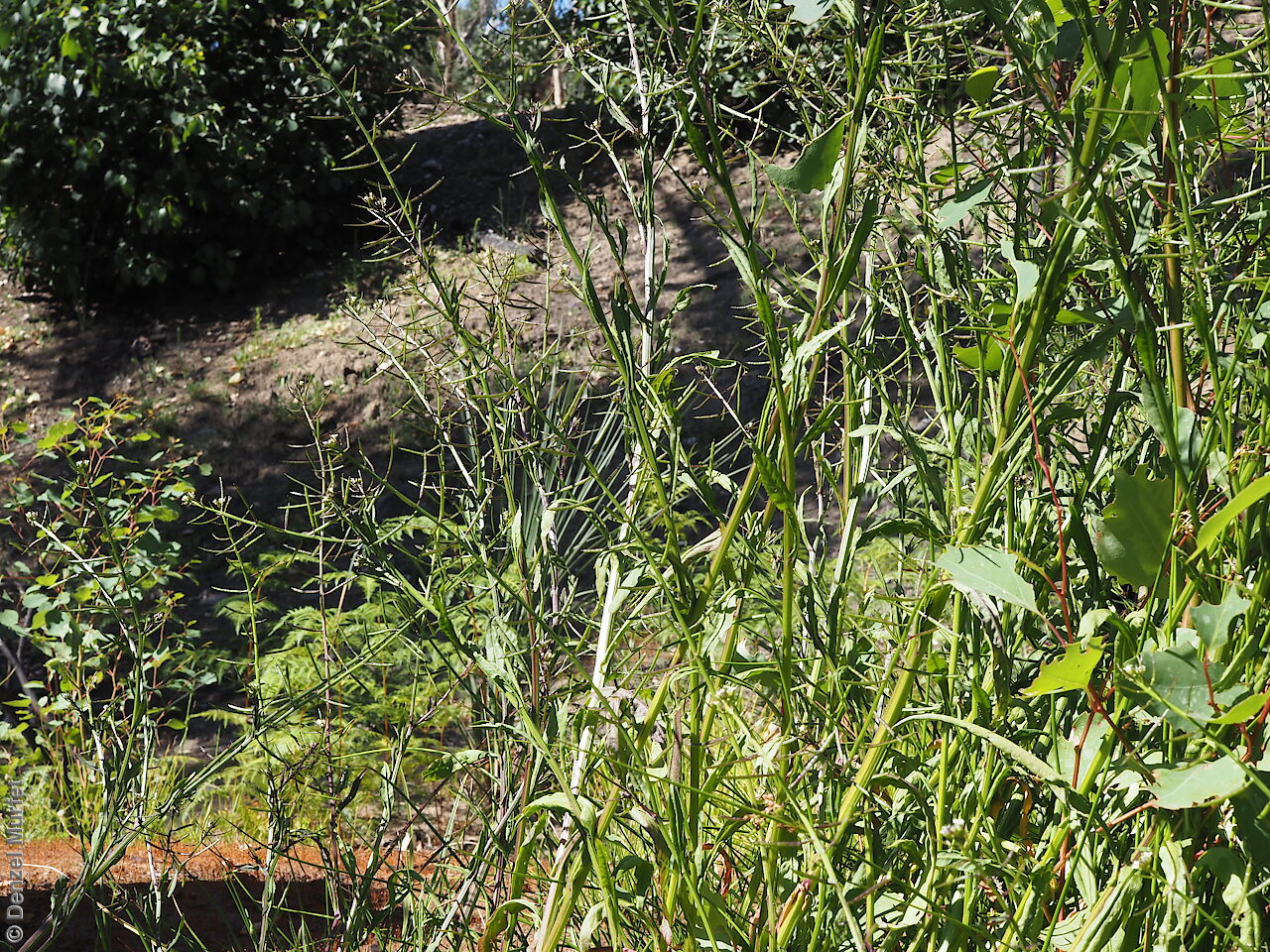
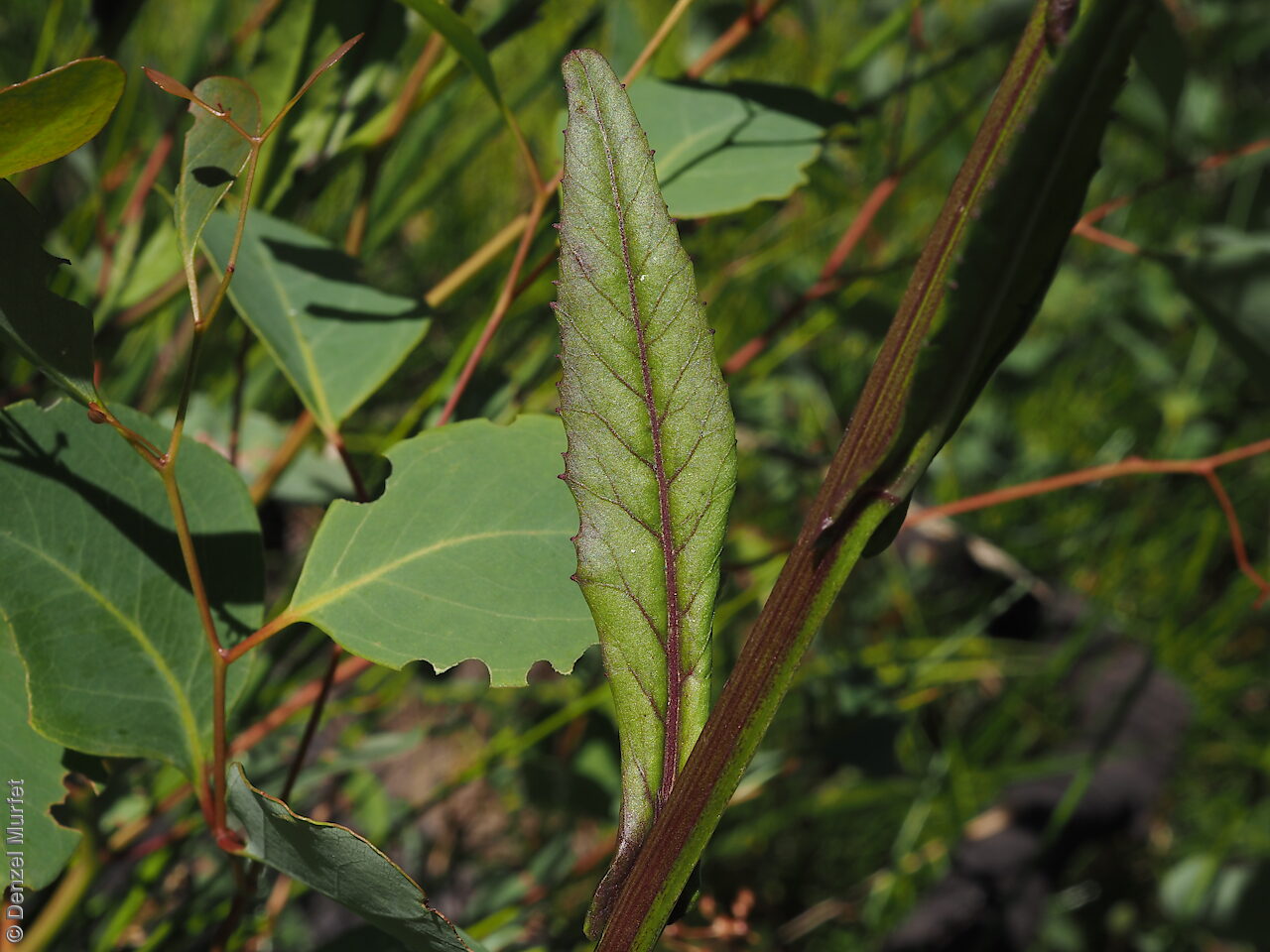
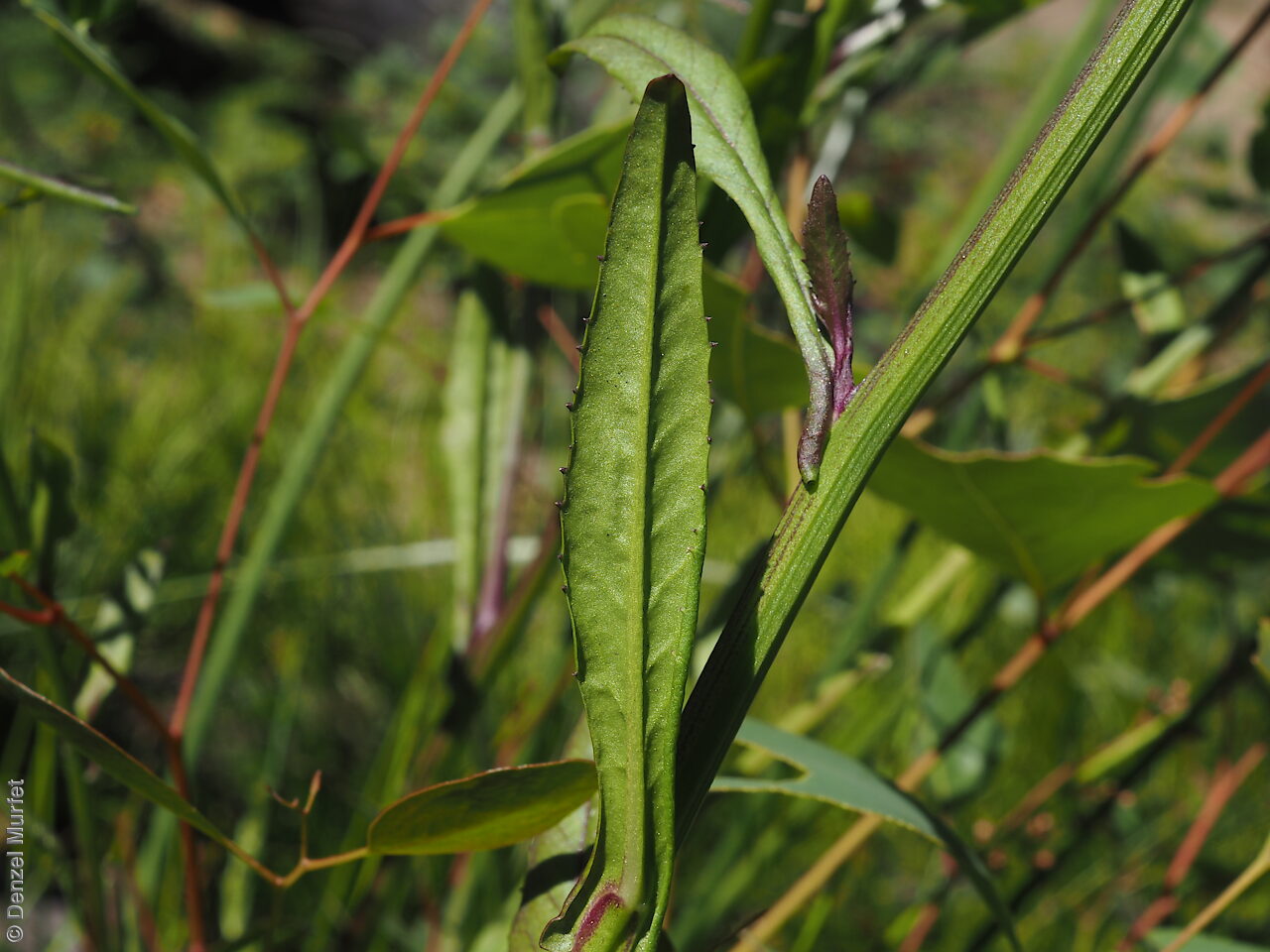
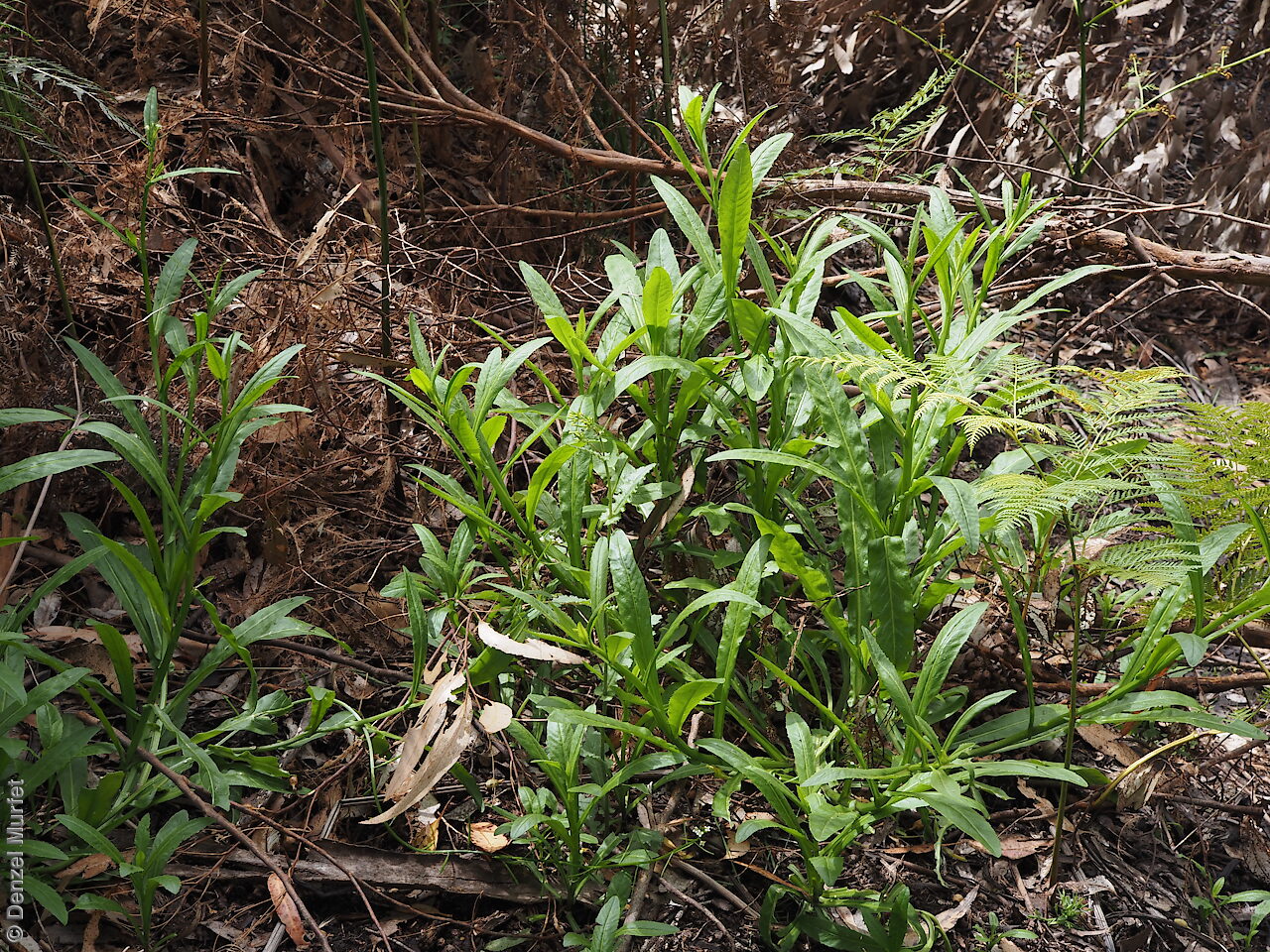
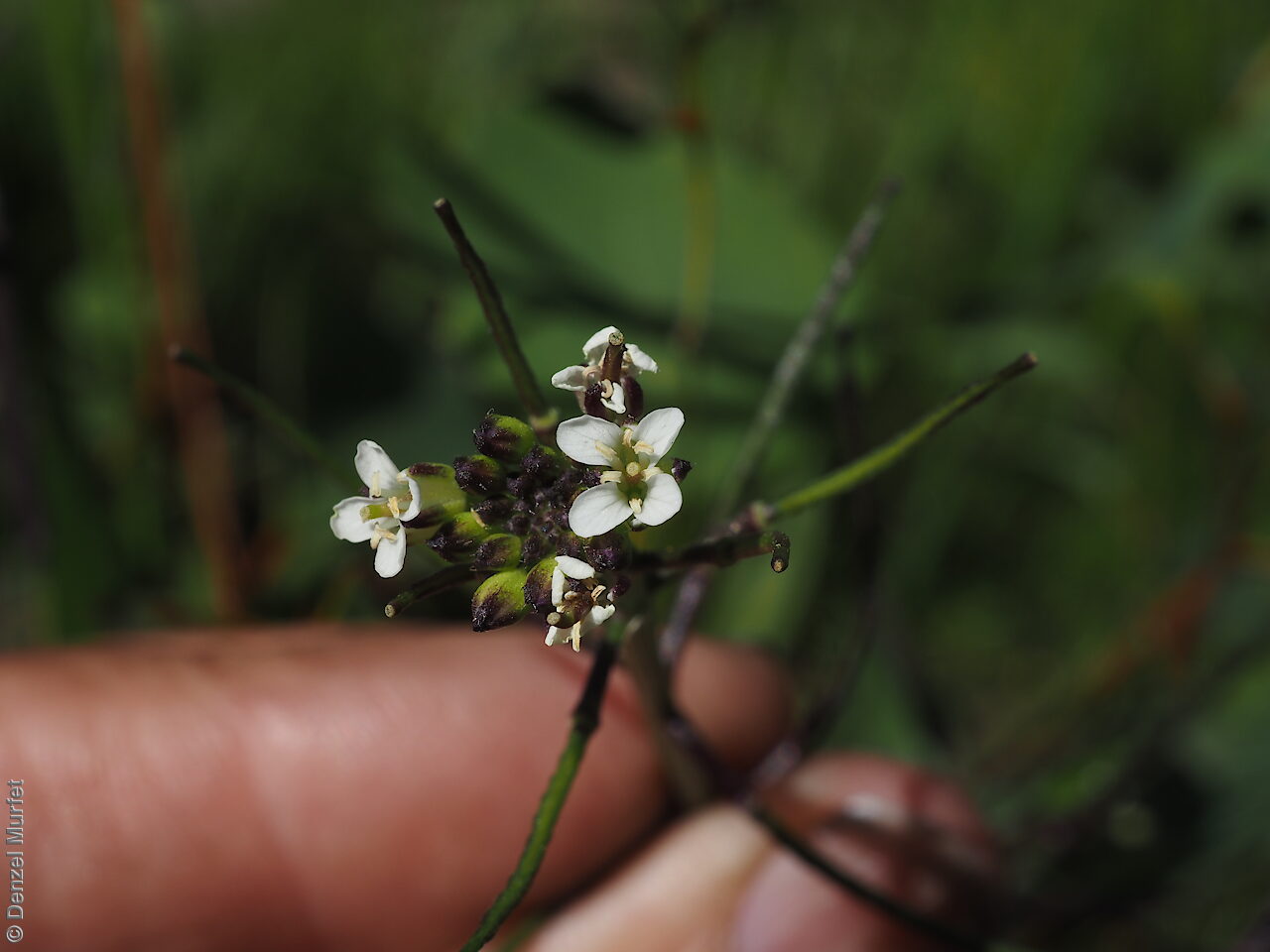
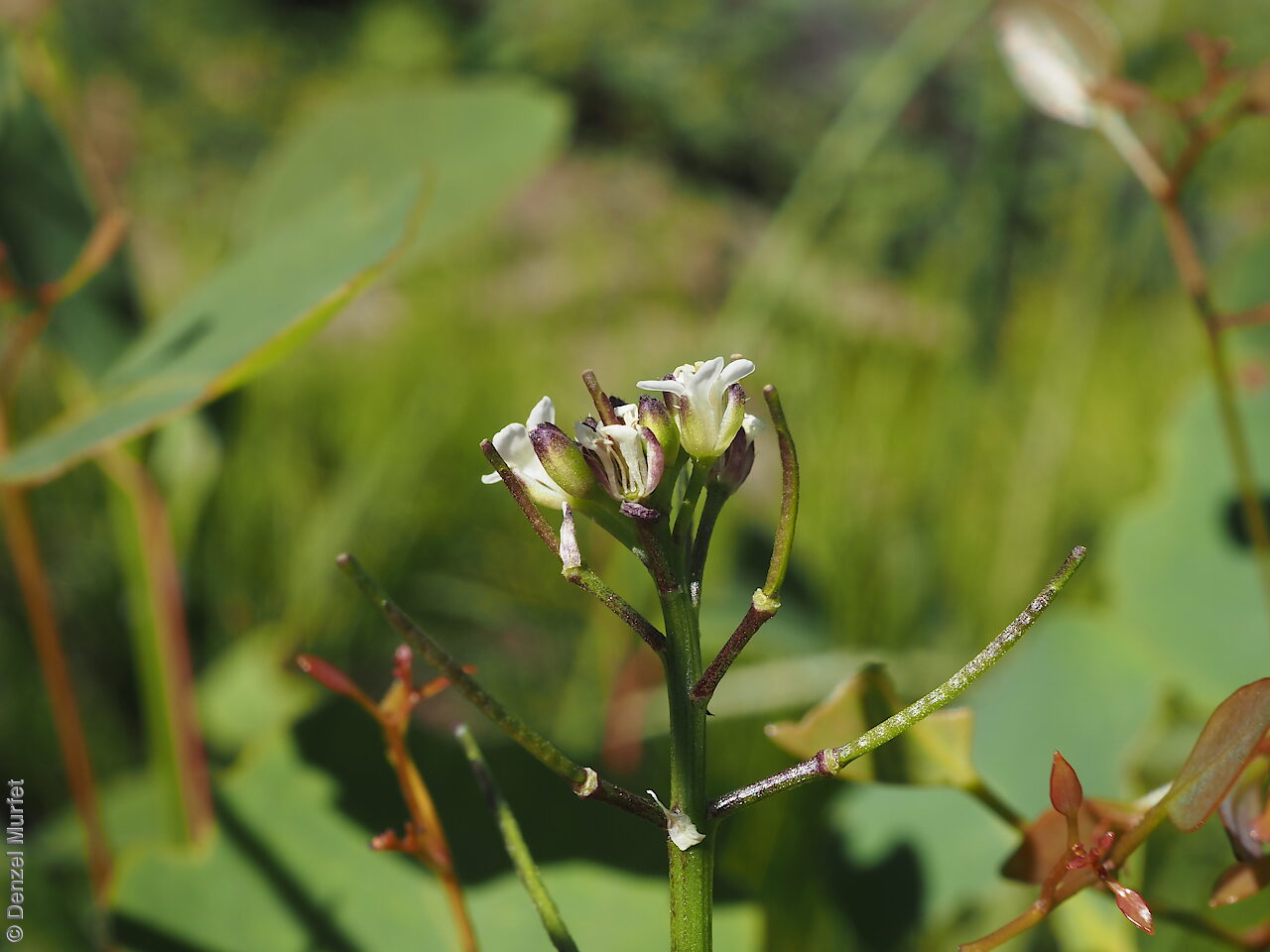
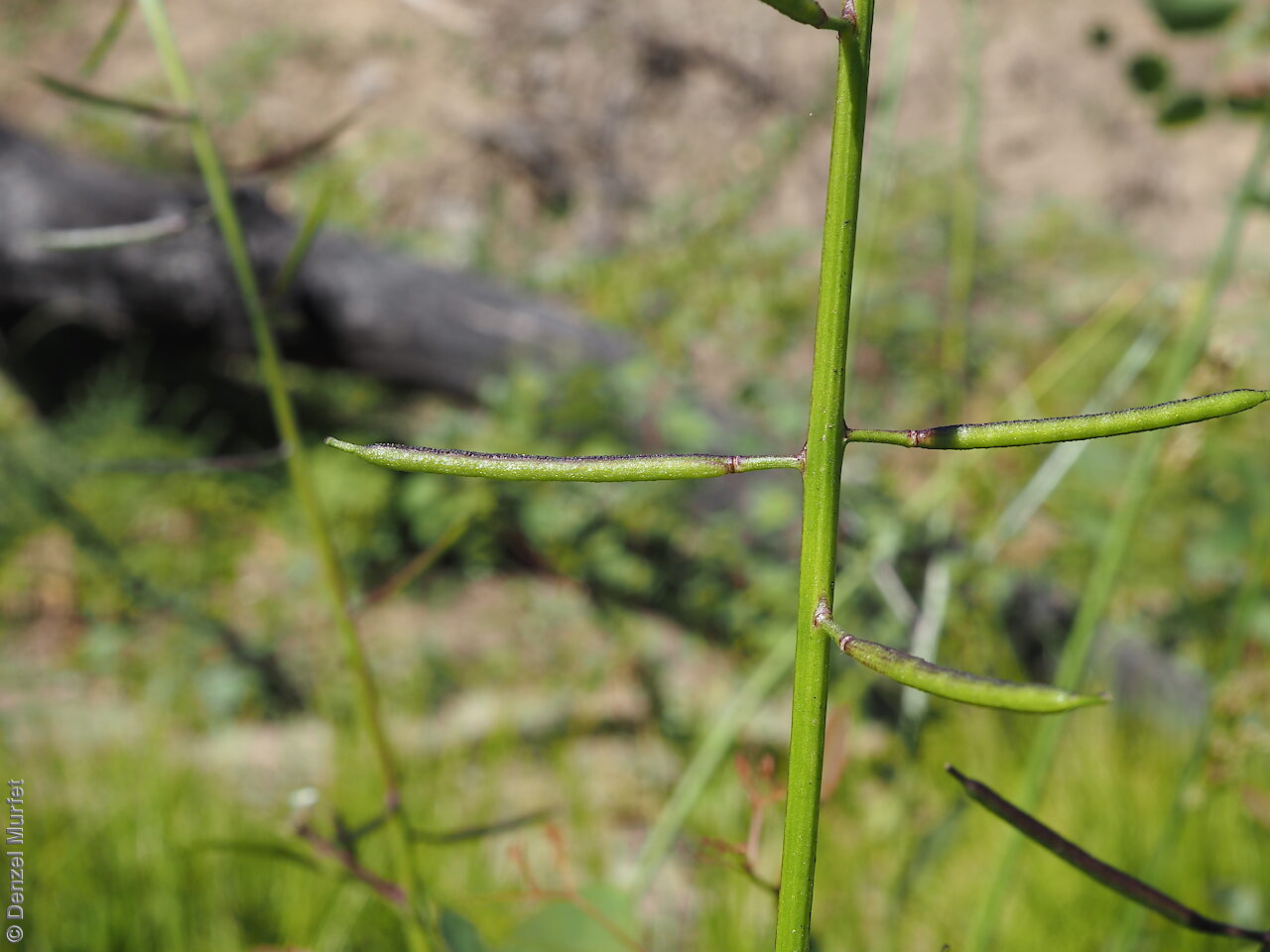
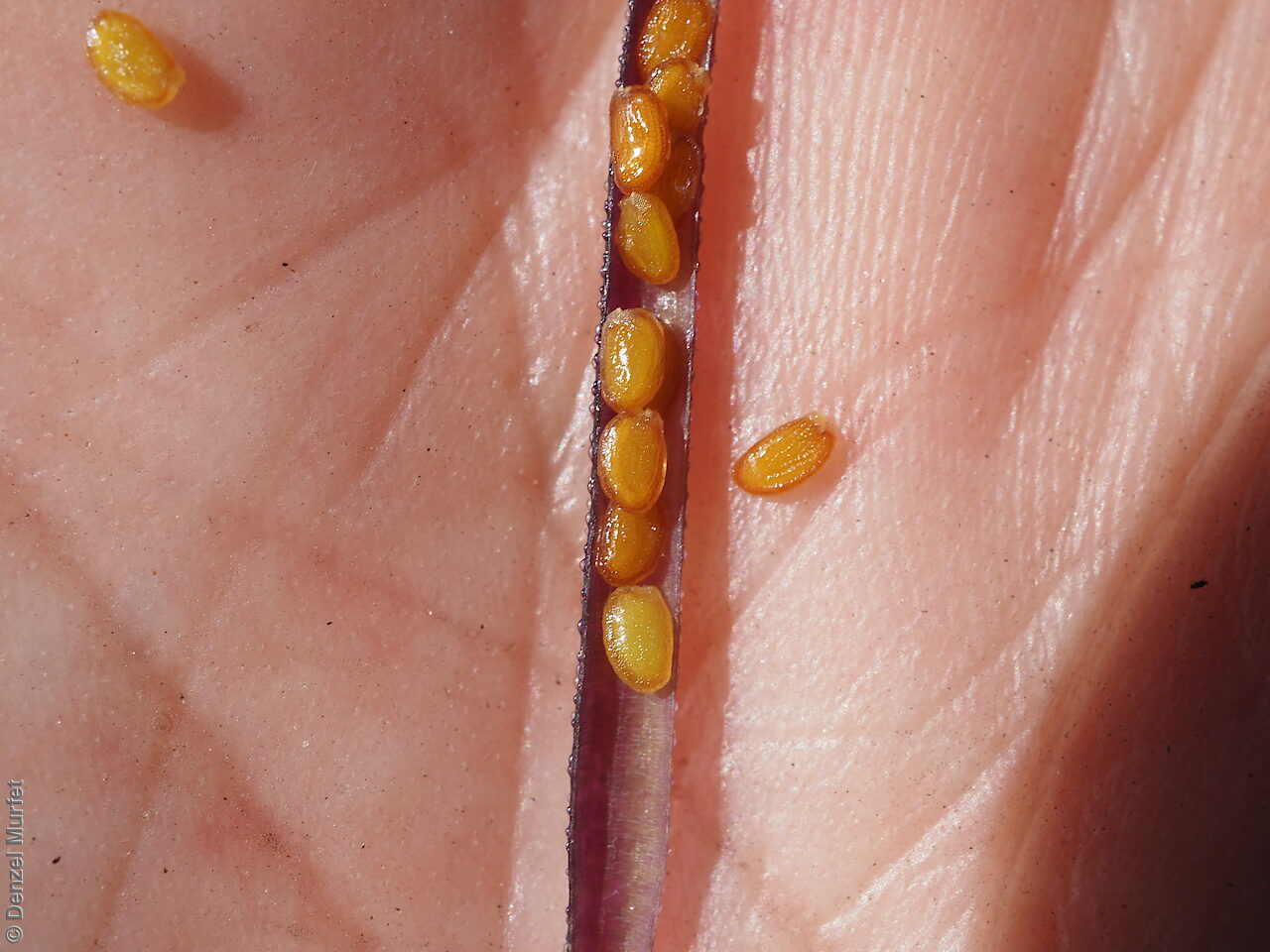
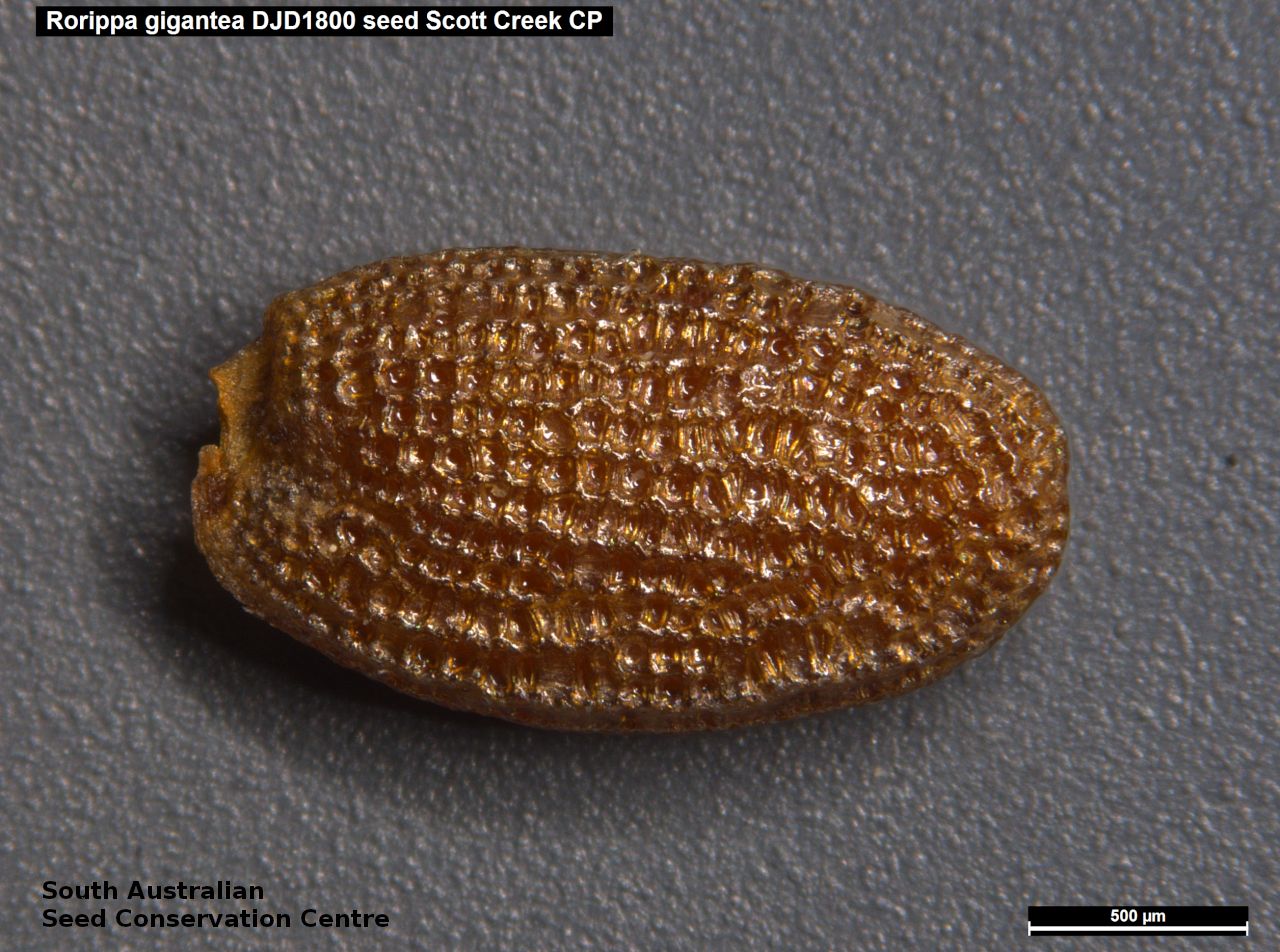
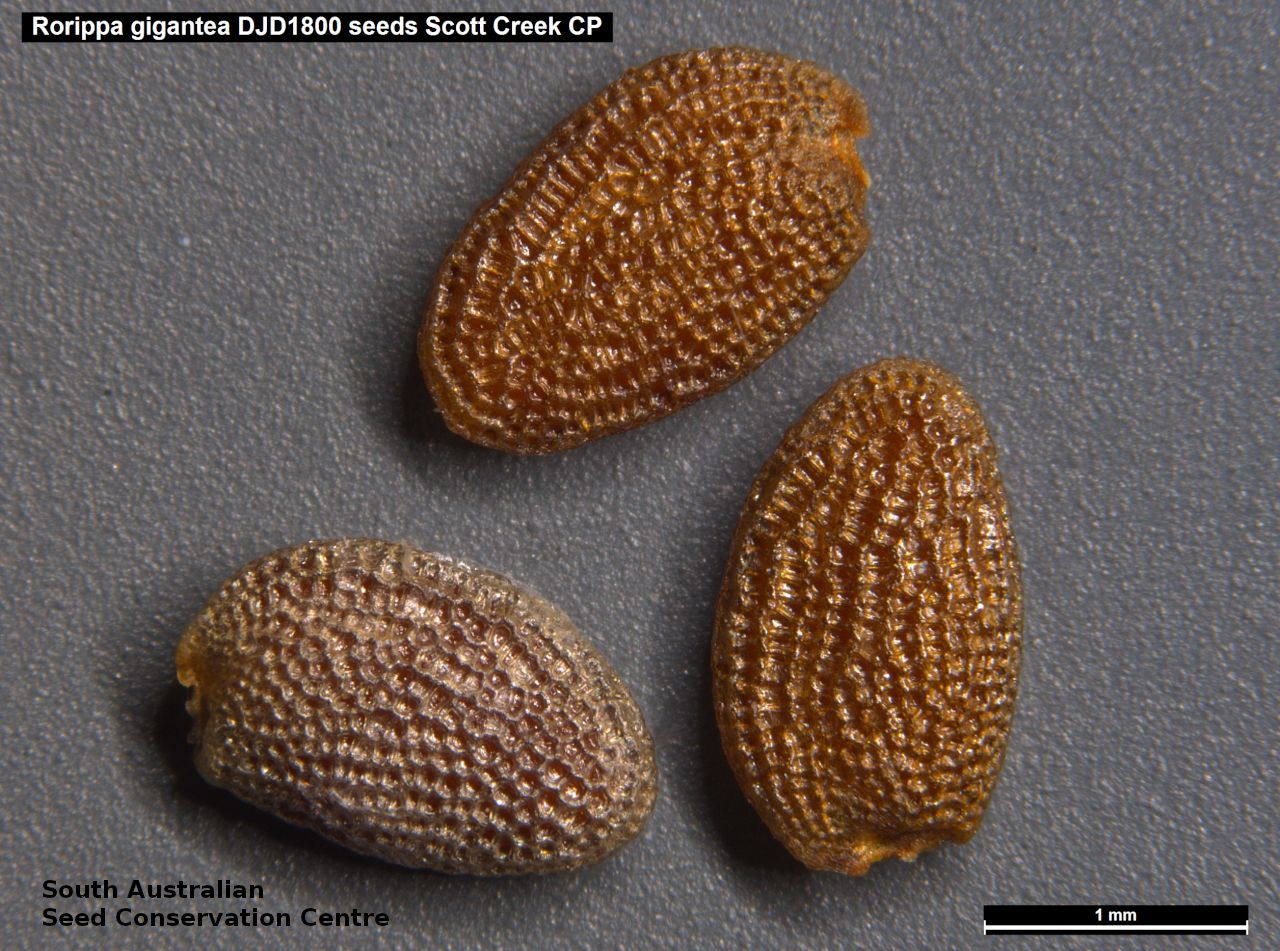
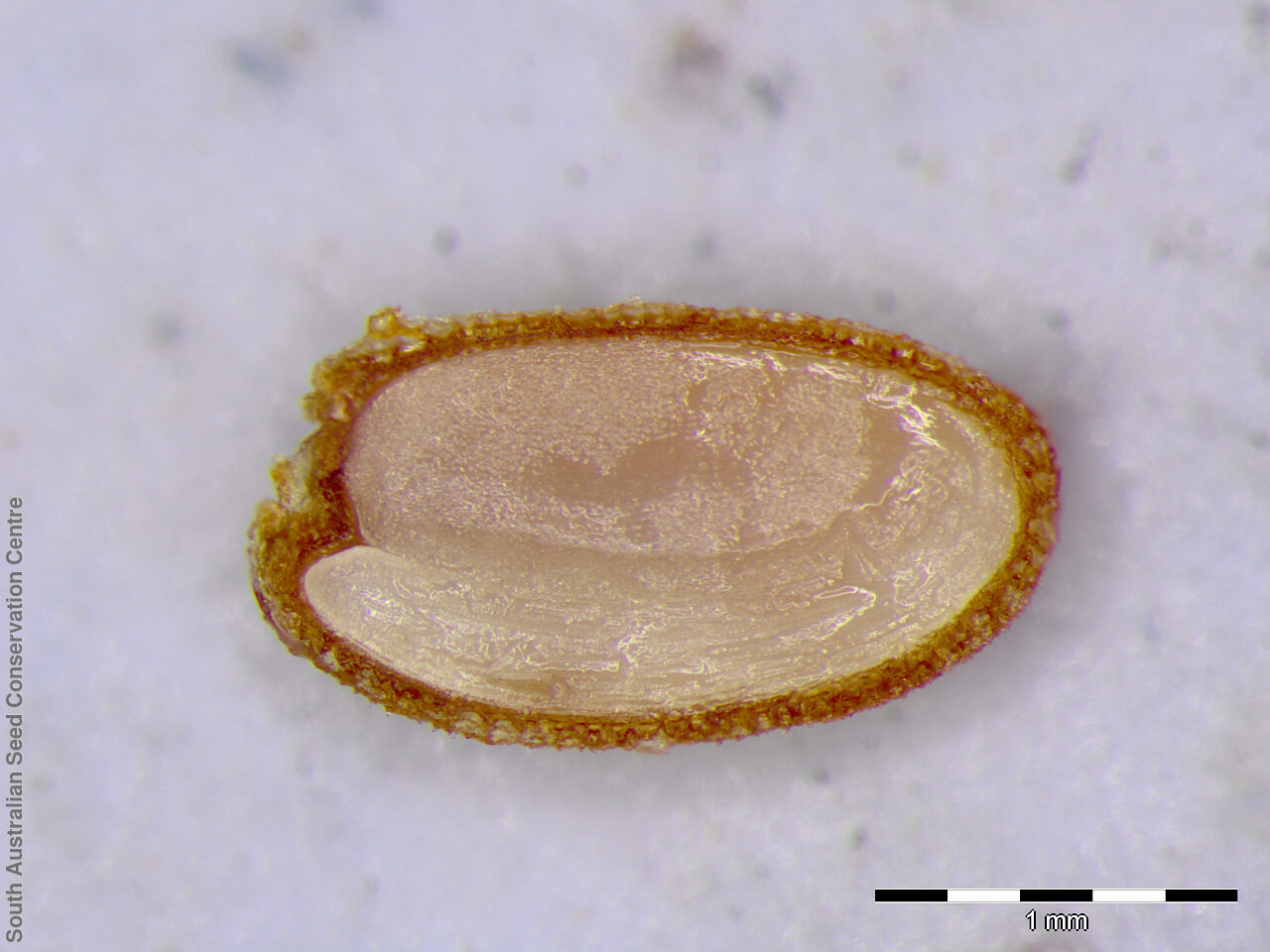
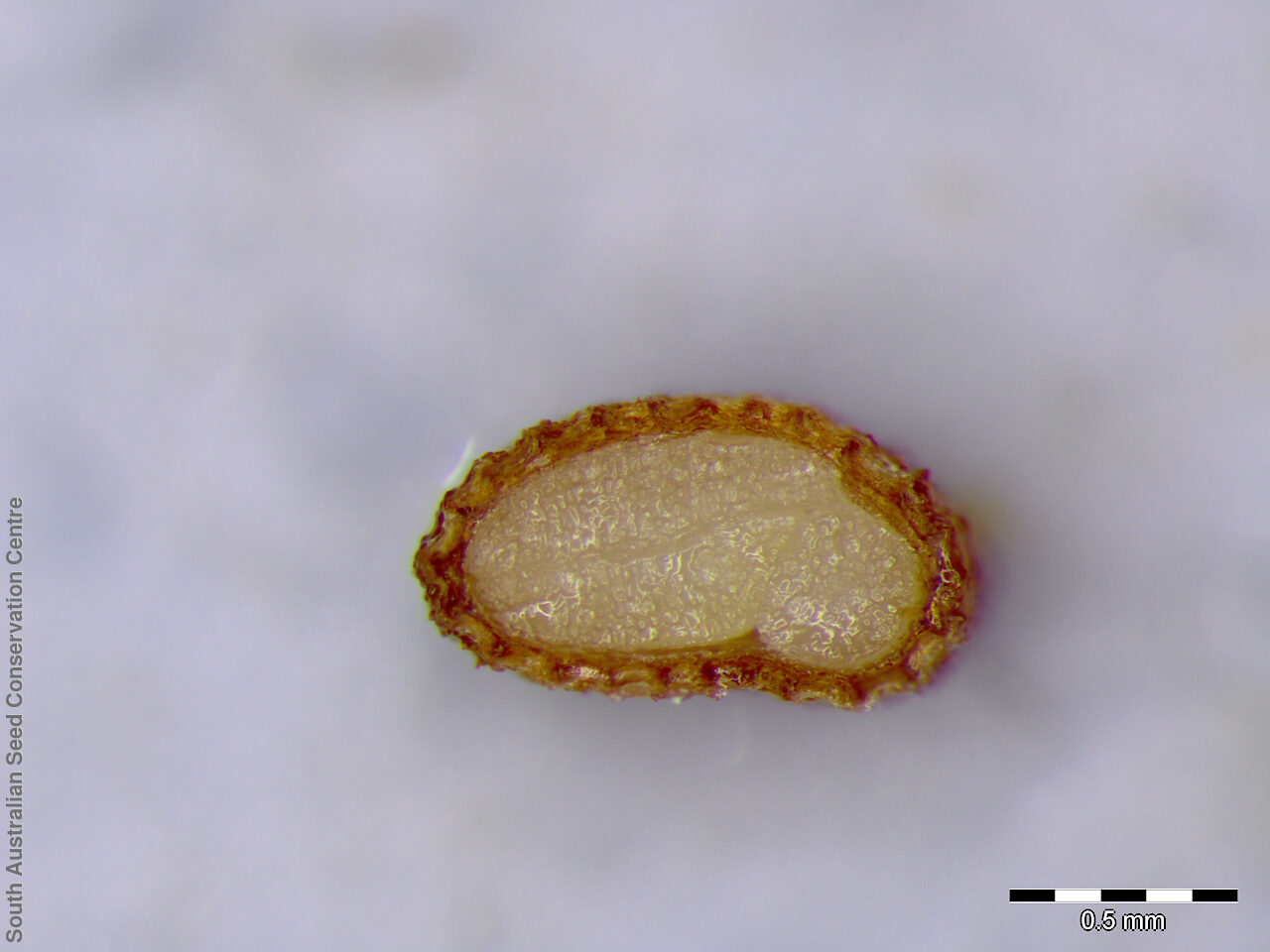
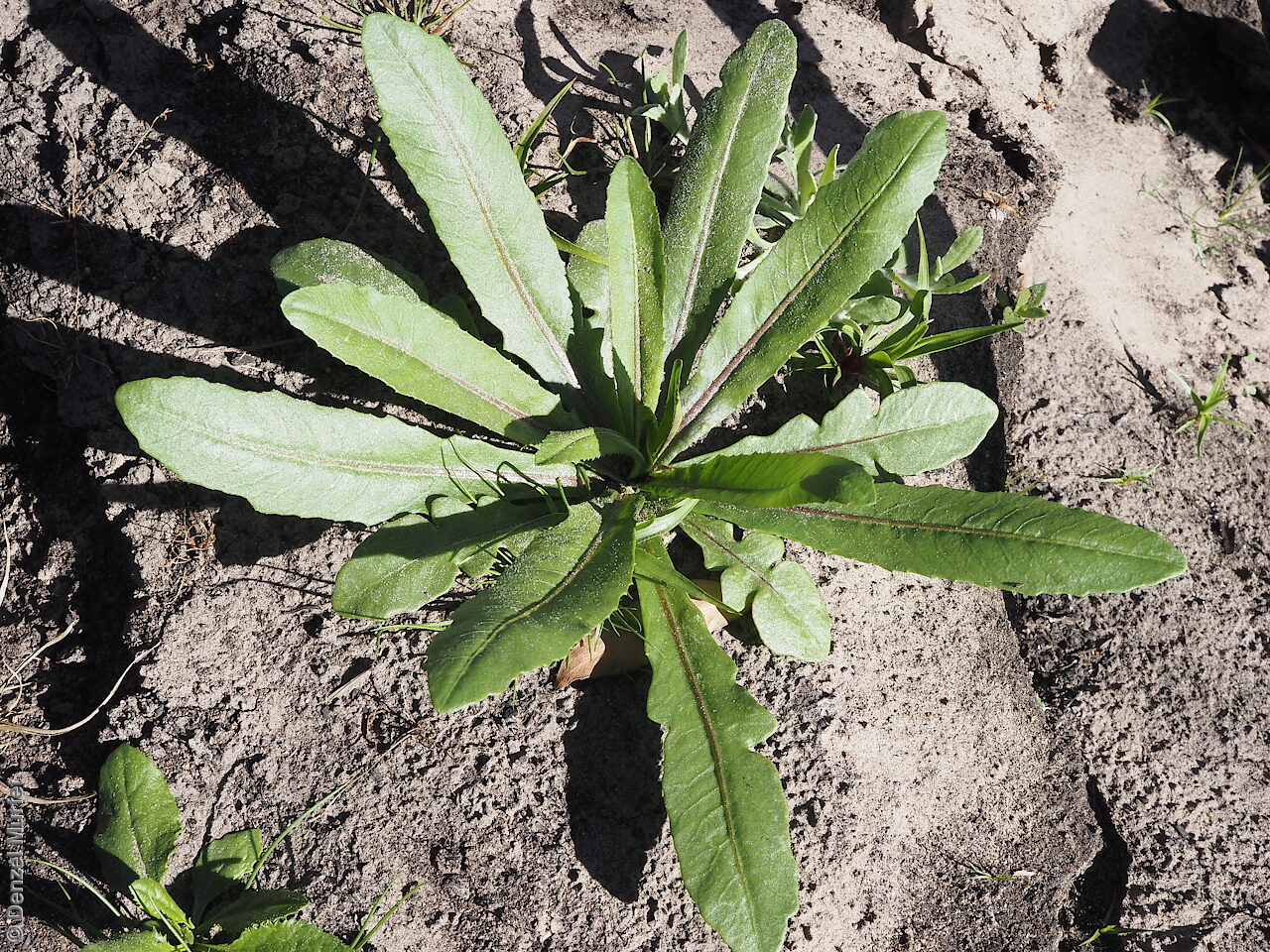
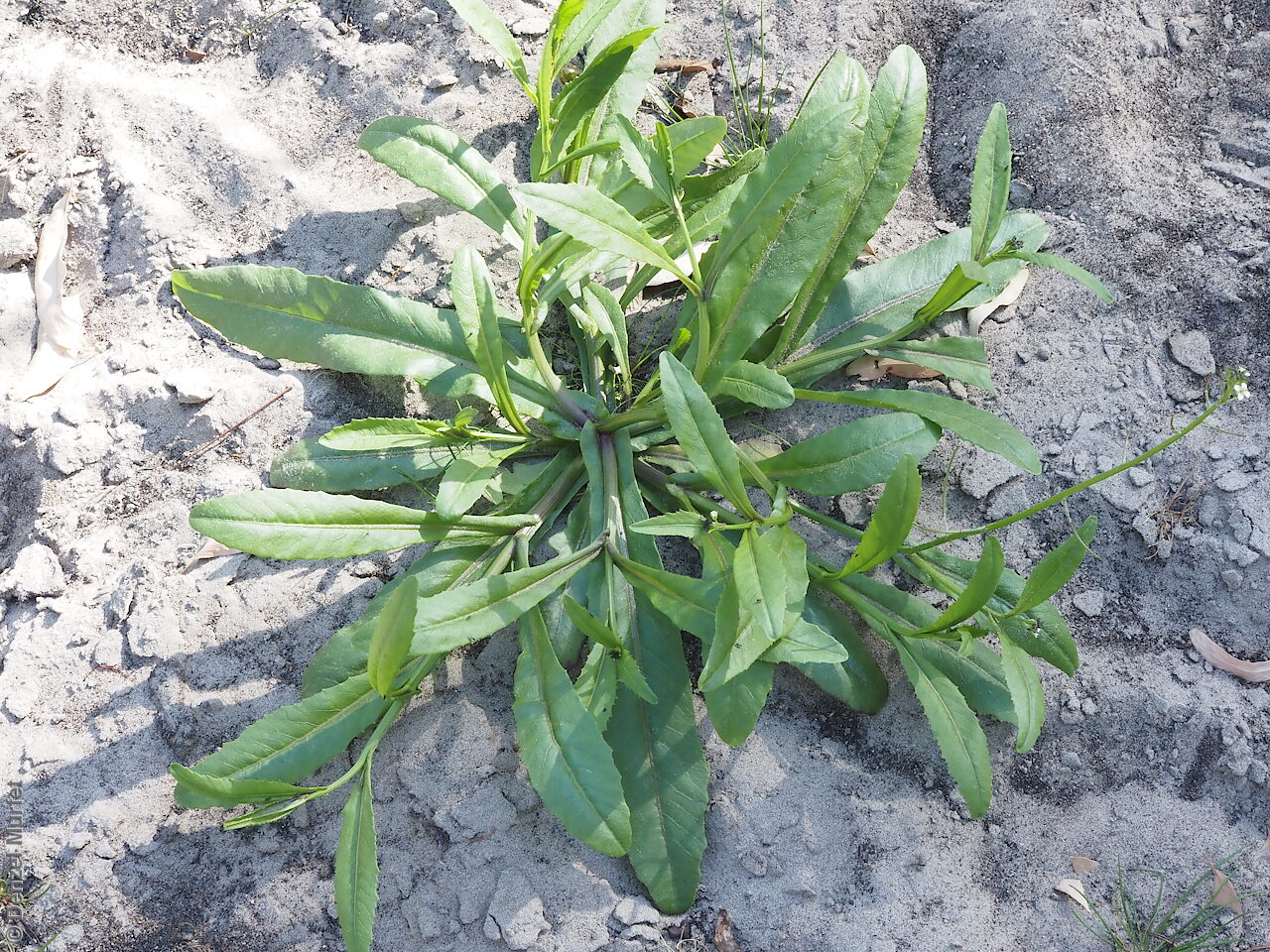


Prior names
Arabis gigantea
Etymology
Rorippa possible from the Latinised form of 'Rorippen', a Saxon vernacular name used by Euricius Cordus or from the Latin 'roro' meaning to be moist and 'ripa' meaning riverbank; referring to the genus habitat in moist places. Gigantea from the Latin 'giganteus' meaning very large; referring to the larger leaves and habitat of the species.
Distribution and status
Found in the southern Mount Lofty Ranges in South Australia, growing in moist creekline. Also found in Queensland, New South Wales, Victoria and Tasmania. Native. Rare in South Australia. Common in the other states.
Herbarium regions: Southern Lofty, Kangaroo Island, Green Adelaide
NRM regions: Adelaide and Mount Lofty Ranges, Kangaroo Island
AVH map: SA distribution map (external link)
Plant description
Decumbent to erect annual to 120 cm high, glabrous. Leaves sessile, oblong to lanceolate, to 12 cm long, all or at least lower leaves not lobed, margins entire or toothed with widely spaced teeth, stem leaves reducing, sagittate. Inflorescence small cluster at terminal with white flowers. Flowers in spring and summer. Fruits are long brown pod to 40 mm long. Seeds are brown ovoid seeds to 2 mm long and 1.2 mm wide. Seed embryo type is bent.
Seed collection and propagation
Collect seeds between December and January. Collect maturing pods those turning pale brown with orange seeds inside. Be gentle with the pods as they split open easily. Place the pods in a tray and cover with paper to prevent seeds from popping out and leave to dry for a week. Then rub the dried pods gently by hand to dislodge the seeds. Use a sieve to separate the unwanted material. Store the seeds with a desiccant such as dried silica beads or dry rice, in an air tight container in a cool and dry place. From one collection, the seed viability was high, at 90%.
| Location | No. of seeds (weight grams) | Number of plants | Date collected | Collection number Collection location | Date stored | % Viability | Storage temperature |
|---|---|---|---|---|---|---|---|
| BGA | 5,300 (3.4 g) | 7 | 23-Dec-2009 | DJD1800 Southern Lofty | 1-Jun-2010 | 90% | -18°C |
| BGA | 210 | 2 | 25-May-2010 | T.Jury Southern Lofty | 1-Jan-2016 | 90% | -18°C |
| BGA MSB | 34,600 (21.420 g) 32,700 (20.250 g) | 60+ | 15-Jan-2021 | DJD3972 Kangaroo Island | 28-Jun-2021 | 100% | -18°C, -80°C |
| BGA | 31,000 (17.390 g) | 50+ | 13-Jan-2021 | DJD3971 Kangaroo Island | 28-Jun-2021 | 95% | -18°C, -80°C |
Number of plants: This is the number of plants from which the seeds were collected.
Collection location: The Herbarium of South Australia's region name.
% Viability: Percentage of filled healthy seeds determined by a cut test or x-ray.